Common Procedures
- Most major insurance accepted
- NC Medicaid provider
- In-house dental savings plan
- All major credit cards
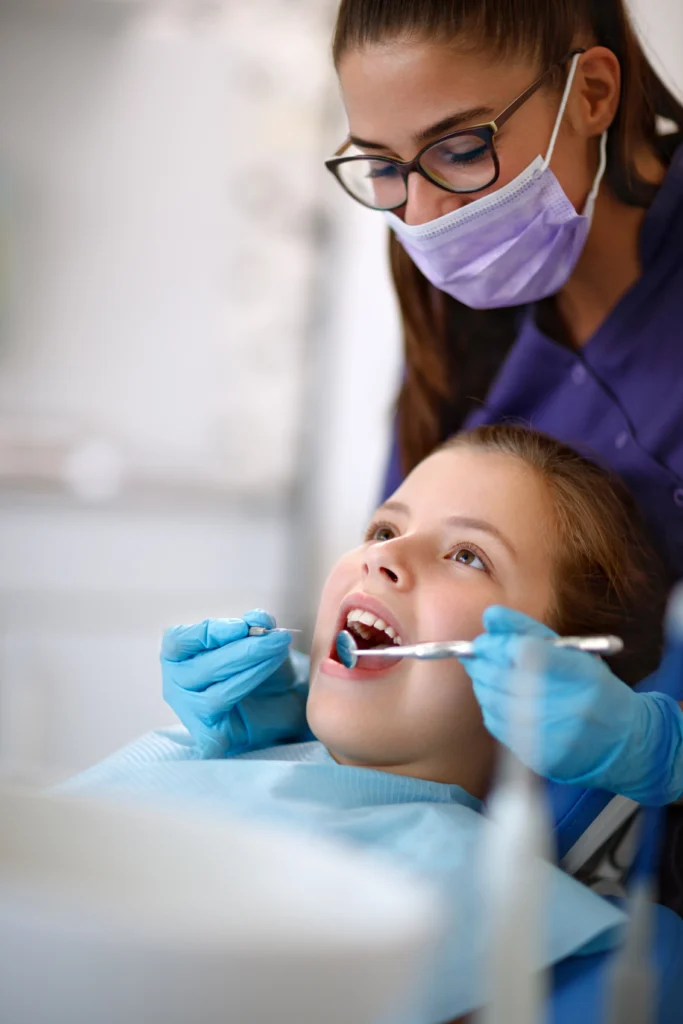
Regular Exams and Cleanings
Regular exams are an important part of maintaining your child’s oral health. During your child’s regular exam, we will:
- Check for any problems that may not be seen or felt
- Look for cavities or any other signs of tooth decay
- Inspect the teeth and gums for gingivitis and signs of periodontal disease
- Perform a thorough teeth cleaning
Your child’s exam will take about 45 minutes. Each regular exam includes a detailed teeth cleaning, in which we will clean, polish, and rinse the teeth to remove any tartar and plaque that have built up on the tooth’s surface.
Visiting our office every six months gives you the chance to talk to the doctor about any questions you may have about your child’s oral health. Regular exams are offered by appointment only, so please contact our practice today to schedule your child’s next dental exam and teeth cleaning.
Gentle, comprehensive dental care for children with flexible payment options for growing families.

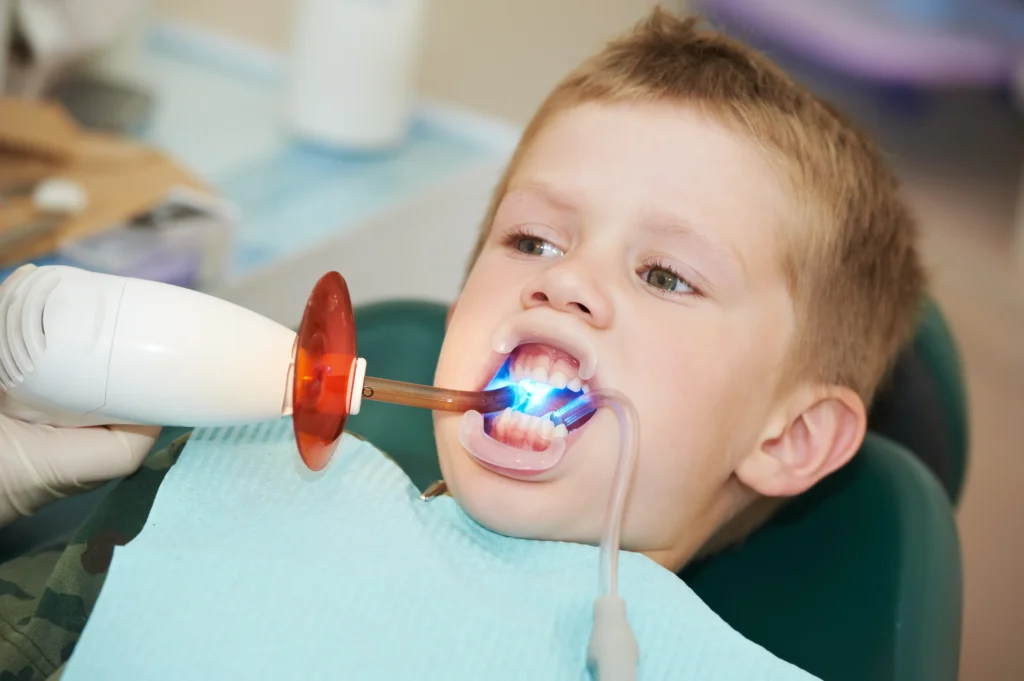
Composite Fillings
Fillings are a conservative way to repair slightly chipped, discolored, or crooked teeth. Many patients prefer composite fillings because they are white in color , which makes them much less noticeable than the traditional silver (or amalgam) fillings. Composite fillings can be used on front or back teeth, depending on the location and extent of tooth decay.
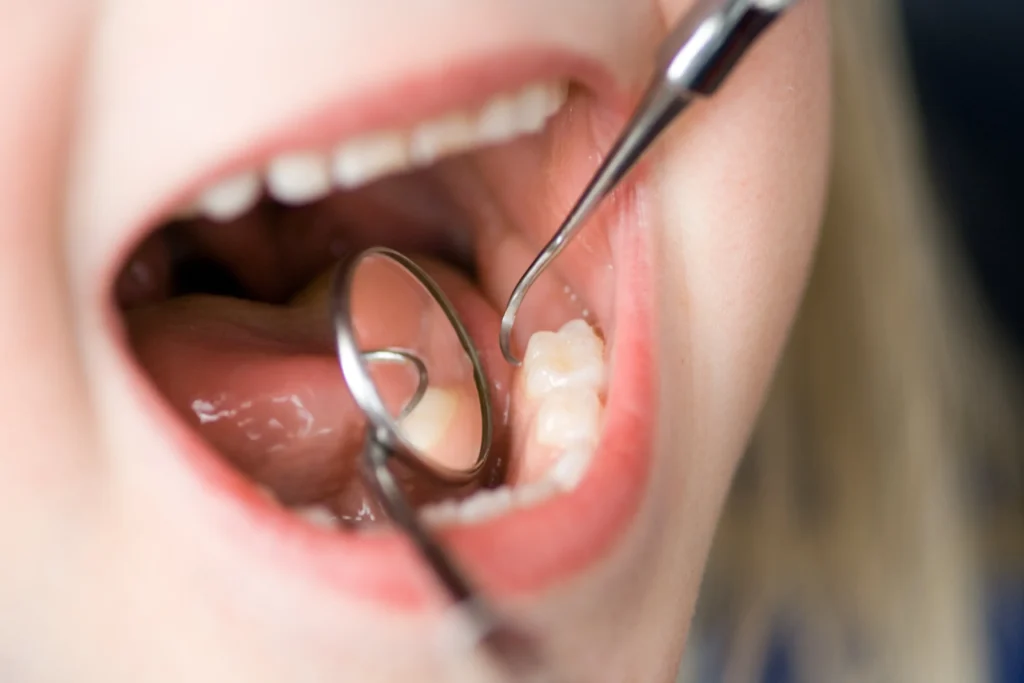
Crowns
Crowns are a restorative procedure most often used for teeth that are broken, worn, or have portions destroyed by tooth decay. Crowns are needed when there is insufficient tooth strength remaining to hold a filling. Once decay has spread to more than one surface of a tooth, a crown would be the next restoration available.
A stainless steel crown is a “cap” cemented onto an existing tooth that usually covers the portion of the tooth above the gum line. In effect, the crown becomes the tooth’s new outer surface.
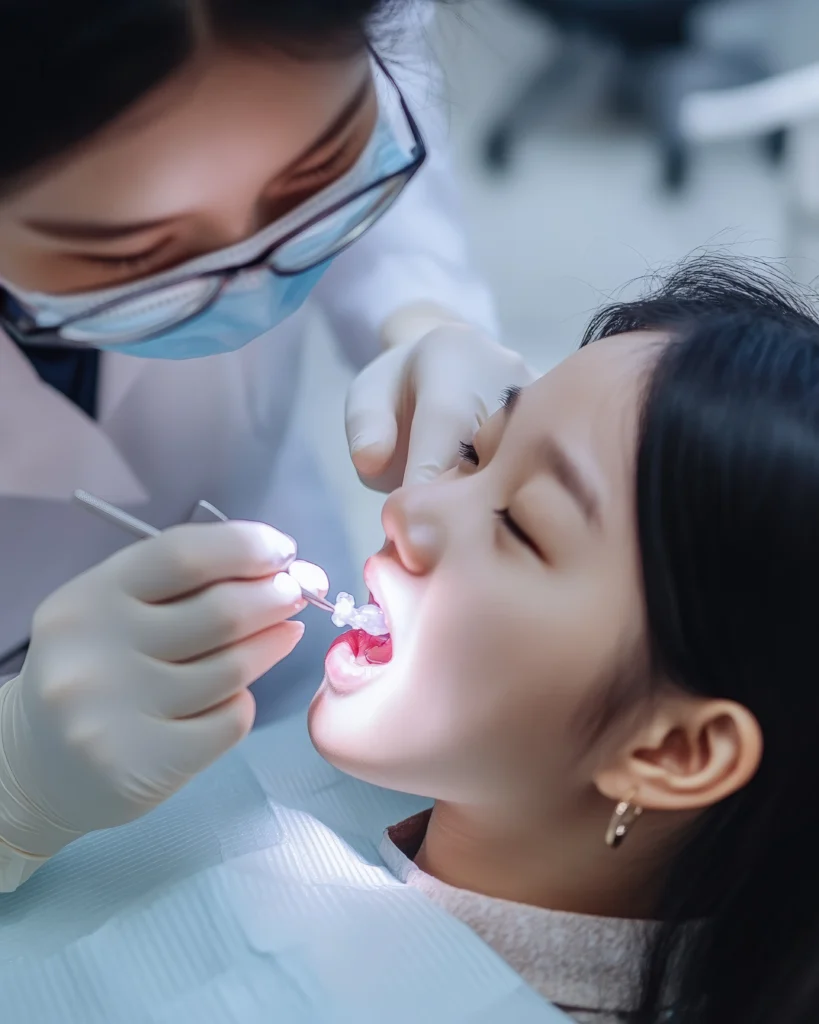
Fluoride
Fluoride is effective in preventing cavities and tooth decay and in preventing plaque from building up and hardening on the tooth’s surface. A fluoride treatment in a dentist’s office takes just a few minutes. After the treatment, your child may be asked not to rinse, eat, or drink for at least 30 minutes in order to allow the teeth to absorb the fluoride. Depending on your child’s oral health or the doctor’s recommendation, a fluoride treatment may be required every three, six, or twelve months.
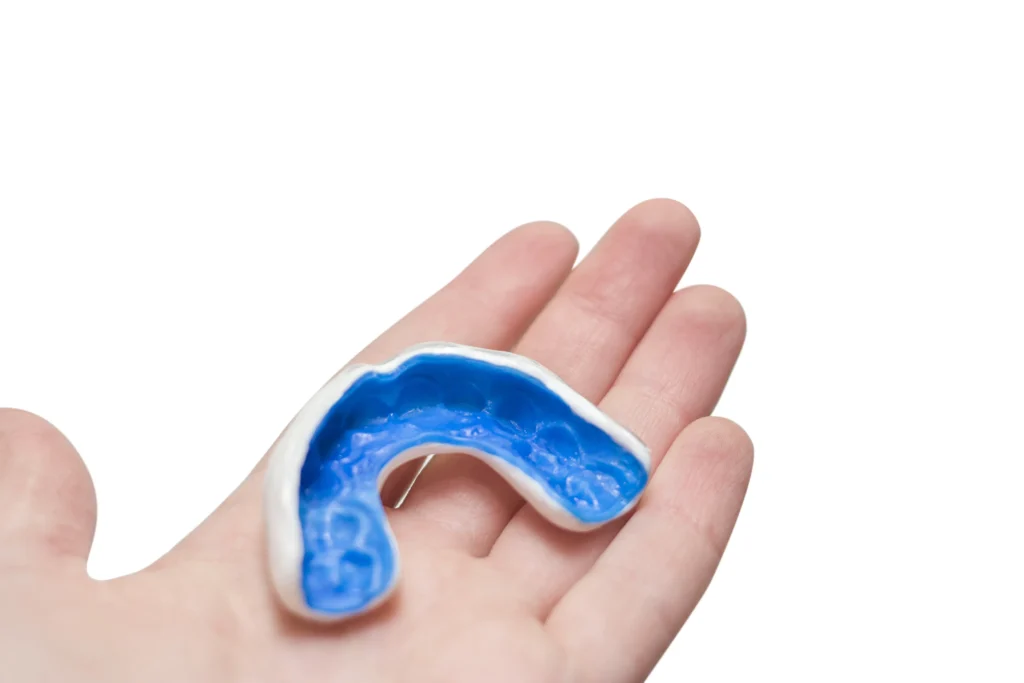
Mouthguards
Whether your child wears braces or not, protecting his or her smile while playing sports is essential. Mouthguards help protect the teeth and gums from injury. If your child participates in any kind of full-contact sport, the American Dental Association recommends that he or she wear a mouthguard. Choosing the right mouthguard is essential. There are three basic types of mouthguards: the pre-made mouthguard, the “boil-and-bite” fitted mouthguard, and a custom-made mouthguard from the dentist. When you choose a mouthguard, be sure to pick one that is tear-resistant, comfortable and well-fitted for your mouth, easy to keep clean, and does not prevent your child from breathing properly. Your dentist can show your child how to wear a mouthguard properly and how to choose the right mouthguard to protect his or her smile.
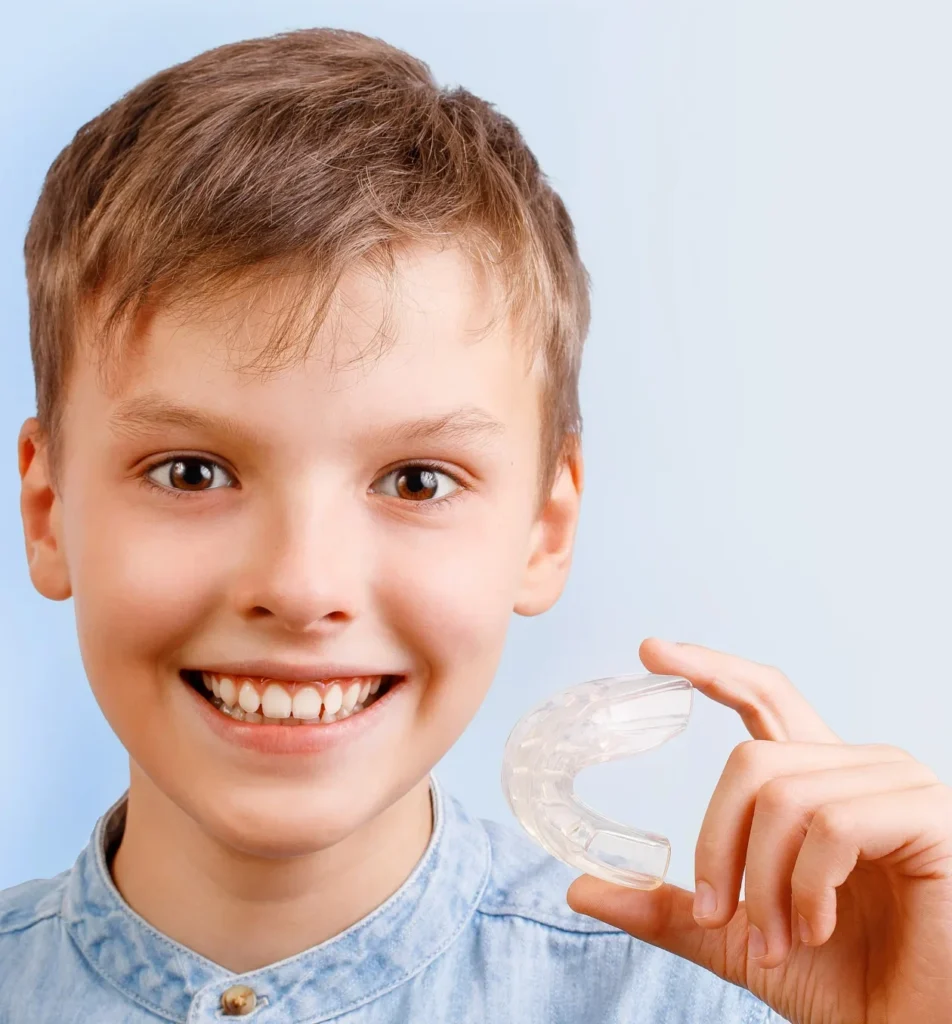
Nightguards
If your child often wakes up with jaw pain, earaches, or headaches, or if you see your child clenching or grinding his or her teeth, your child may have a common condition called “bruxism”. Bruxism is a normal sign of growth and development and children usually grow out of it. However, for older children, there is an easy, non-invasive treatment for bruxism: nightguards. Nightguards are an easy way to prevent the wear and damage that teeth-grinding causes over time. Custom-made by a dentist from soft material to fit the teeth, a nightguard is inserted over your child’s top or bottom arch and prevents contact with the opposing teeth.

Root Canals
Today, with a special dental procedure called “root canal treatment”, your child’s tooth can be saved. When a tooth is cracked or has a deep cavity, bacteria can enter the pulp tissue and germs can cause an infection inside the tooth. If left untreated, an abscess may form. If the infected tissue is not removed, pain and swelling can result. This can not only injure your child’s jawbones, but it is also detrimental to his or her overall health.
During treatment, the dentist will remove the affected tissue. Next, the interior of the tooth will be cleaned and sealed. Finally, the tooth is restored with a stainless steel crowns. Placing a stainless steel crown helps to strengthen and protect the tooth from breaking. As long as your child continues to care for his or her teeth and gums with regular brushing, flossing, and checkups, the restored tooth can last as long as it is in the child’s mouth.
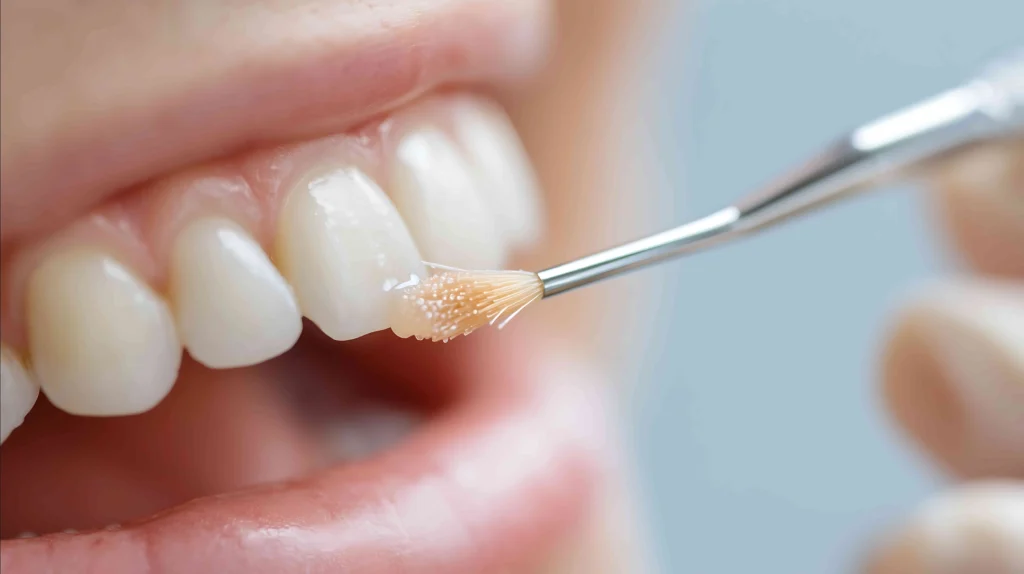
Sealants
Sometimes brushing is not enough, especially when it comes to those hard-to-reach spots in your child’s mouth. It is difficult for a toothbrush to get in between the small pits and grooves on your child’s teeth. If left alone, those tiny areas can develop tooth decay. Sealants give your child’s teeth that extra protection against decay and help prevent cavities.
When a tooth is sealed, the tiny grooves become smooth and are less likely to harbor plaque. With sealants, brushing your child’s teeth becomes easier and more effective against tooth decay.
Sealants are typically applied to children’s teeth as a preventive measure against tooth decay after the permanent teeth have erupted. It is more common to seal “permanent” teeth rather than “baby” teeth, but every patient has unique needs, and your child’s dentist will recommend sealants on a case-by-case basis.
Sealants last from three to five years, but it is fairly common to see adults with sealants still intact from their childhood.
If it’s been six months or more since your child’s last dental checkup, then it’s time to contact our practice and schedule an appointment!
Our Convenient Locations
Our Convenient Locations
We Can’t Wait To Meet You
Please use the form below to schedule your appointment with us. Alternatively, if you prefer, you can schedule through our online chat or by calling or texting the office.
Please use the form below to schedule your appointment with us. Alternatively, if you prefer, you can schedule through our online chat or by calling or texting the office.
